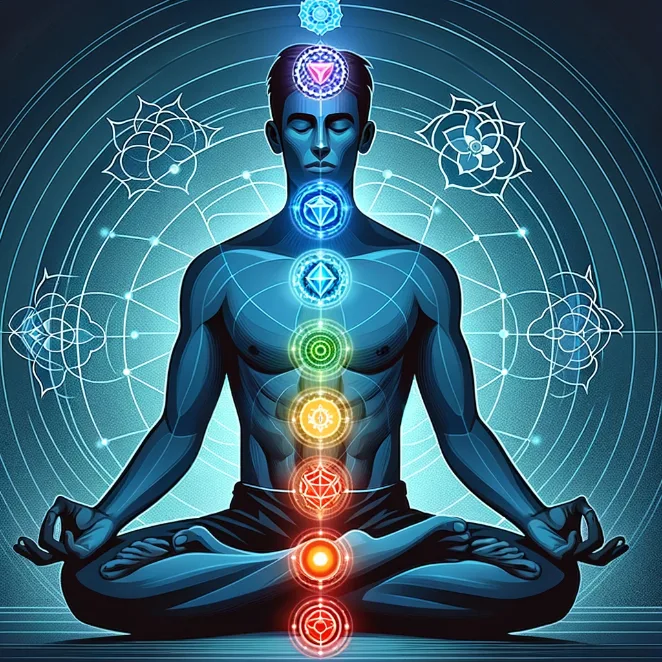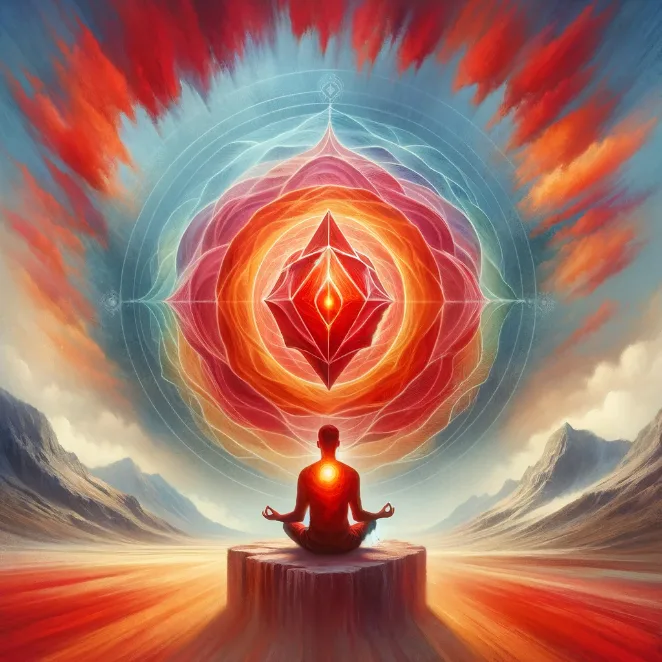
Harmonizing Life: Chakra Meditation Explained
In the realm of holistic wellness, chakra meditation stands as a profound practice aimed at balancing life's energy. Originating from ancient Indian philosophy, chakras are energy centers located throughout the body, each corresponding to different aspects of physical, emotional, and spiritual well-being. Understanding and aligning these chakras through meditation can lead to enhanced harmony and health
article by Hina Kurosawa
Understanding Chakras
The concept of chakras plays a pivotal role in various Eastern philosophies and healing practices. The human body is said to have seven main chakras, each located at a specific point along the spine, from the base to the crown of the head. These centers are believed to govern various bodily functions and emotional states, influencing everything from our survival instincts to our capacity for love and understanding.

Chakra Meditation Techniques
Chakra meditation involves focusing on each energy center to unblock, balance, and activate them. The practice typically starts at the root chakra, moving upward to the crown chakra. Techniques include visualizing the color associated with each chakra, chanting specific mantras, and focusing on the physical location of each chakra. Deep, mindful breathing is a key aspect, facilitating the flow of energy through the chakras.
Root Chakra: Foundation of Stability
Located at the base of the spine, the root chakra, or Muladhara, represents stability and survival. Meditating on this chakra involves visualizing a vibrant red color and focusing on feelings of safety and grounding. The mantra for this chakra is ‘LAM.
Sacral Chakra: Center of Creativity
The sacral chakra, or Svadhisthana, located just below the navel, is associated with creativity and sexual energy. Its color is orange, and focusing on this area during meditation can enhance feelings of pleasure and emotional well-being. The mantra for activating this chakra is ‘VAM.’
Solar Plexus Chakra: Seat of Personal Power
The solar plexus chakra, or Manipura, found in the upper abdomen, governs self-esteem and confidence. Its color is yellow, and meditating on this chakra involves visualizing this bright hue while focusing on empowerment and self-worth. The mantra for this chakra is ‘RAM.’
Heart Chakra: Bridge of Love and Healing
Located in the chest, the heart chakra, or Anahata, is the center of love and compassion. Its associated color is green. Focusing on this chakra in meditation opens up feelings of love, kindness, and connectedness. The mantra for the heart chakra is ‘YAM.’
Throat Chakra: Expression and Communication
The throat chakra, or Vishuddha, located at the throat, relates to communication and expression. Its color is blue. Meditating on this chakra can enhance one's ability to communicate truthfully and effectively. The mantra for this chakra is ‘HAM.’
Third Eye Chakra: Insight and Intuition
The third eye chakra, or Ajna, located on the forehead between the eyes, is the center of intuition and foresight. Its color is indigo. Focusing on this chakra can heighten intuition and inner wisdom. The mantra for the third eye chakra is ‘OM.’
Crown Chakra: Spiritual Connection
The crown chakra, or Sahasrara, at the top of the head, represents spiritual connection and enlightenment. Its color is violet or white. Meditation on this chakra is often seen as the pinnacle of spiritual growth, seeking to connect with the divine. The mantra for this chakra is ‘OM’ or silence.

Chakra meditation offers a pathway to deeper understanding and alignment of one's energy centers. By regularly engaging in this practice, individuals can achieve a state of balance, enhancing physical, emotional, and spiritual well-being.
Published: 11/11/2023
Modified: 11/11/2023
More predictions
Come back here soon to learn more about yourself and your future





